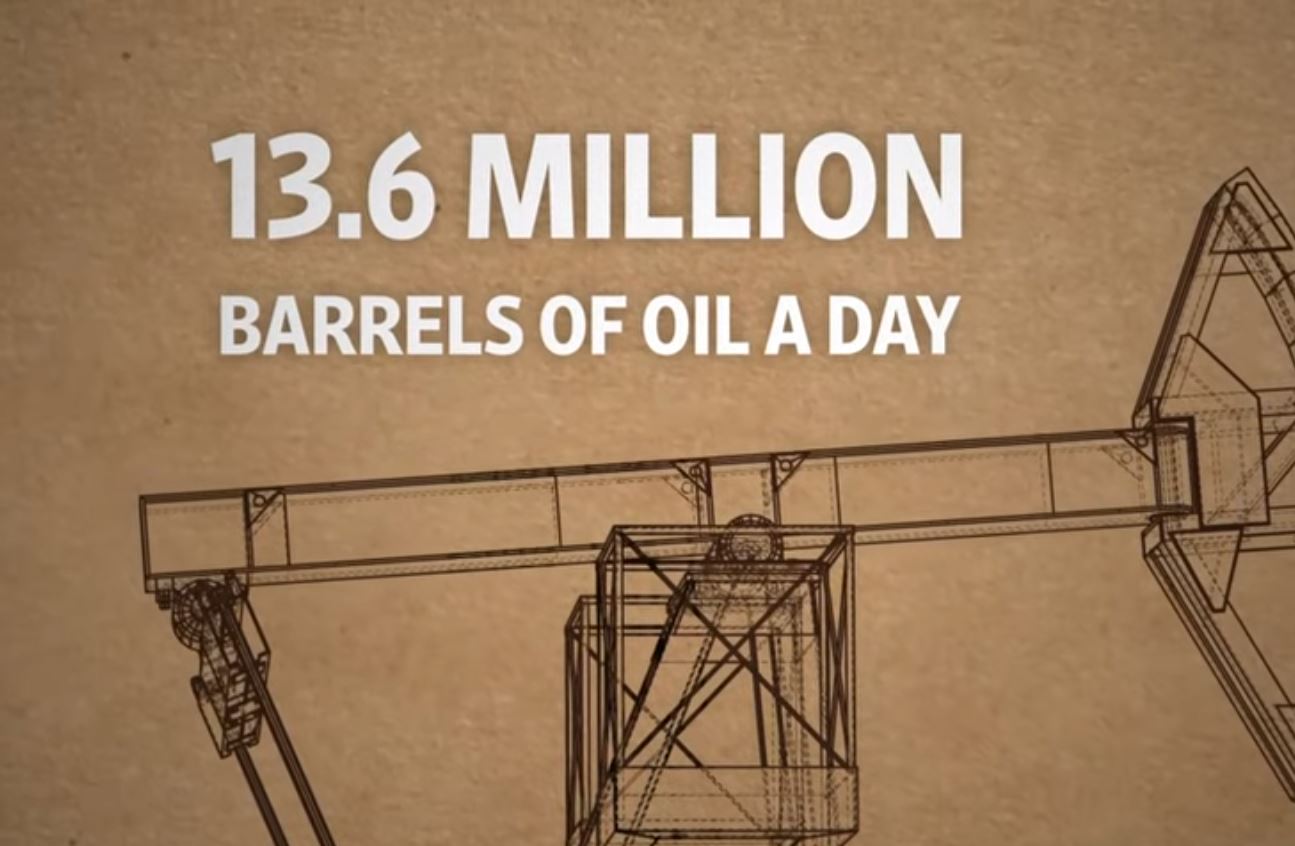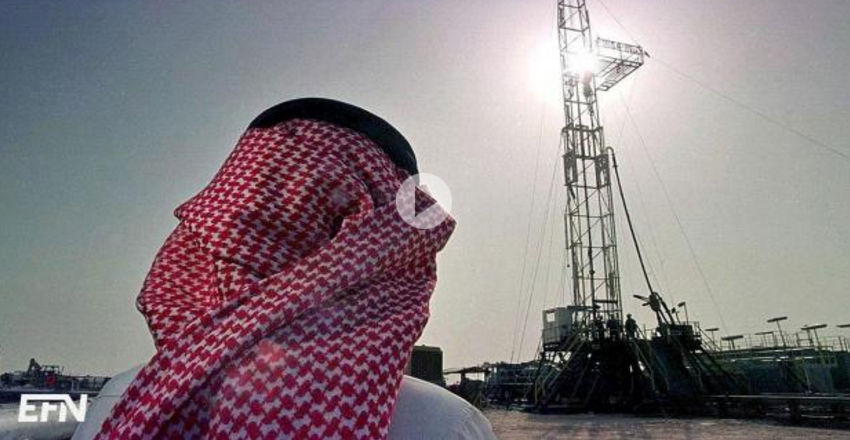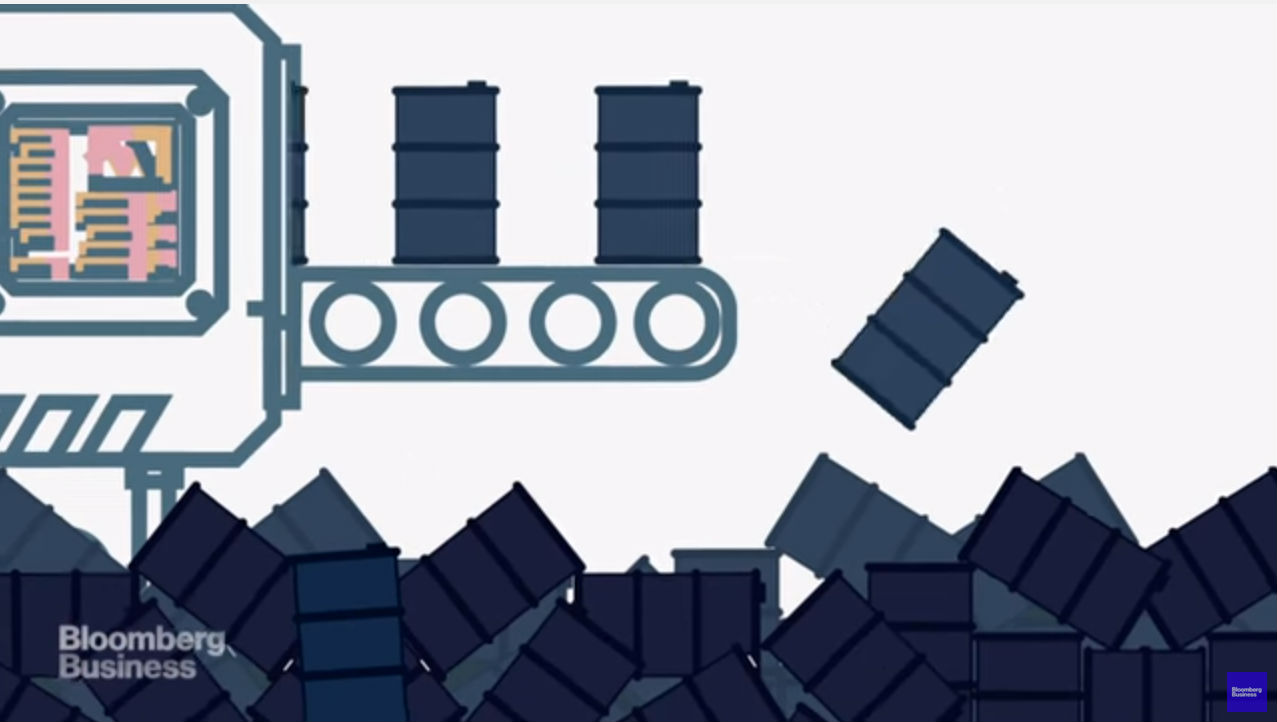Analys
Det stora spannmålsrånet

Det stora spannmålsrånet, eller The Great grain robbery, också känt som The Russian wheat deal, refererar till när det forna Sovjetunionen 1972 köpte betydande mängder spannmål, främst vete och majs men också sojabönor, av USA till låga priser. Orsaken till att Sovjetunionen köpte sådana mängder spannmål från USA berodde på att Sovjetunionen drabbats av en betydande torka som förstörde 20 procent av landets skördar.
 Egentligen hade Sovjetunionen börjat köpa amerikanskt spannmål redan innan, trots det kalla kriget som då rådde och gjorde att det i princip var omöjligt för amerikanska företag att handla med företag i Östeuropa.
Egentligen hade Sovjetunionen börjat köpa amerikanskt spannmål redan innan, trots det kalla kriget som då rådde och gjorde att det i princip var omöjligt för amerikanska företag att handla med företag i Östeuropa.
De stora köpen kom under perioden juli och augusti 1972, när Sovjetunionen köpte 440 miljoner bushels vete, cirka 25 procent av USAs skörd det året, till ett pris om 700 MUSD. Från början var det endast tänkt att Sovjetunionen skulle köpa spannmål till ett värde om 150 MUSD, men i all tysthet signerade den amerikanska regeringen ett treårigt avtal med Sovjetunionen enligt vilket de styrande i det stora landet i öst förband sig att köpa stora mängder spannmål från USA.
Sovjetunionen gjorde sedan ytterligare köp från en rad olika spannmålshandlare. Sovjetunionen använde en kredit på 750 MUSD som landet hade fått från den amerikanska regeringen samt 500 MUSD av sin egen hårdvaluta för att köpa majs, vete och sojabönor. Sovjetunionen köpte när priserna var låga och i all tysthet, faktum är att det tog flera månader innan det kom ut att Sovjetunionen agerat så pass tungt på köpsidan. När detta väl läckte ut kom spannmålspriserna att explodera uppåt.
De högsta spannmålspriserna på 125 år
Händelsen ledde sedan till de högsta spannmålspriserna på 125 år i USA, en av de verkliga tjurmarknaderna som varade mellan 1972 och 1973. Under en femmånadersperiod 1973 handlades sojabönorna till 8 USD per bushel och noterade sedan en toppnotering på Chicago Board of Trade på 12,90 USD per bushel. Mindre än ett år tidigare hade sojabönorna handlats till 3,31 USD per bushel, en prisuppgång på 390 procent. Att priserna steg så pass kraftigt var inte enbart en effekt av Sovjetunionens köp, det sammanföll med en torka i Australien och av att Indien vid detta tillfälle kom att bli en stor aktör på de globala råvarubörserna, i detta fall som en stor köpare av spannmål.
Samtidigt kom ett antal av USAs spannmålsexportörer att göra stora vinster på denna affär, uppskattningsvis kunde de dela på 300 MUSD av de amerikanska skattebetalarnas pengar. Att händelsen kom att bli känd som The Great grain robbery är således inte så konstigt. Flera av dessa spannmålshandlare hade dessutom agerat som köpare, i syfte att hedga det spannmål de sålde till Sovjetunionen så hade de köpt vete, majs och sojabönor på råvarubörserna. När de sovjetiska spannmålsköpen blev allmän kännedom ledde det till att råvaruhandlarna gjorde enorma vinster. Det förekom också beskyllningar om att Sovjet hade köpt stora mängder terminskontrakt i syfte att göra vinster som skulle finansiera köpen av den fysiska spannmålen. Senare ledde detta till att en rad anklagelser om att insidertrading hade skett, men inga åtal väcktes och det gick inte att påvisa att det förekommit någon otillbörlig marknadspåverkan trots senatsförhör och liknande undersökningar. Det enda signifikanta resultatet av detta var att konsumenterna drabbades av högre priser på spannmålsprodukter.
Neil Sanders, Londonbaserad detaljhandelsanalytiker, sade att vetekrisen 1973 bidrog till att priset på en limpa bröd steg med 87 procent, från 10,1 pence, till 18,9 pence året efter. I slutet av 2011 låg priset på motsvarande limpa i England på 84 pence. Även andra livsmedel som till exempel pasta, foder och i förlängningen kyckling och kött kom också att påverkas, om än i mindre omfattning.
Vid FN:s mat och jordbruksorganisation, FAO, i Rom, säger ekonomen Abdolreza Abbassian att det är ländernas regeringar som skall ta skulden i de fall konsumenterna drabbas av spannmålskriserna. Han säger att världen blivit för fokuserad på vete från Svarta havs-regionen. Skördarna i detta område är emellertid mindre pålitliga än det spannmål som odlas i stabilare regioner som Kanada och USA. Enligt Abbassian måste det vidtas åtgärder för att mildra effekter av händelser som torka eller skyfall.
Ryska spioner avlyssnade råvaruhandlarnas telefoner
The Great grain robbery var en lysande insats som bland annat inbegrep den före detta spionorganisationen KGB som avlyssnade råvaruhandlarnas telefoner. Målet med detta var att de ryska spannmålshandlarna skulle kunna hitta de lägsta priserna och kunna köpa spannmålet där det var billigast utan att driva upp priset. På detta sätt kom Sovjet åt 300 MUSD av de amerikanska skattebetalarnas pengar i form av exportsubventioner, i en tid då den amerikanska regeringen var ute efter att lindra de kroniskt låga spannmålspriser genom att uppmuntra spannmålsexport.
Efterdyningar
The Great grain robbery var en av de ekonomiska händelser som kom att ändra världen för alltid. Det stora spannmålsrånet ledde till nya, stränga rapporteringsregler för de amerikanska råvaruhandlarna, regler som gäller än i dag. Det stora spannmålsrånet kom också att leda till en massiv ökning av råvarupriserna i allmänhet, och bidrog till att driva den amerikanska ekonomin till både recession och stagflation. Detta resulterade sedan i vad som kom att kallas för Reaganomics.
President Nixon införde ett exportförbud av sojabönor för att bromsa ytterligare prishöjningar på sojabönor. Detta partiella embargo ledde till kritik från utlandet eftersom det ledde till att amerikanska kontrakt upphävdes.
En bomullskris uppstod 1973 och 1974 där priset på bomull nästan fördubblats under en sexmånadersperiod. Ungefär 500 stämningar lämnades in avseende bomullskontrakt som hade baserats på lägre priser. Samtidigt steg priset på majs kraftigt. Matpriserna världen över steg med cirka 50 procent under de första sex månaderna av 1973. Livsmedelspriserna exploderade igen 1974.
U.S. General Accounting Office släppte en rapport i juli 1973 som säger att försäljningen hade misskötts och bidrog till att pressa upp livsmedelspriserna. Spannmålsförsäljningen ledde dessutom till att de amerikanska skattebetalarna tvingades till att betala onödiga subventioner. GAO sade att Ryssland borde ha betalat högre priser för det spannmål landet köpte vilket skulle ha minska subventionerna till spannmålsföretagen, och att jordbrukarna inte drog någon nytta av veteaffären, utan att det endast var de exporterande spannmålsföretagen som gjorde vinster på detta.
”The Big Grain Robbery” är ett perfekt exempel på vad som händer när utbud och efterfrågan kullkastas på spannmålsmarknaderna.
1987 kom Sovjetunionen tillbaka till spannmålsbörserna
1987 kom sedan Sovjetunionen tillbaka till de globala spannmålsmarknaderna och genomförde tillsammans med Reaganadministrationen en ny affär i amerikanskt vete. Sovjetunionen köpte då fyra miljoner ton motsvarande 147 miljoner bushels, av det amerikanska vetet. Detta vete motsvarade cirka åtta procent av det amerikanska veteöverskottet på 1,88 miljarder bushels vete.
Hur kunde detta ske?
Under hela det kalla kriget, hade de ryska bönderna utmaningar i form av det ryska klimatet och de tvivelaktiga sovjetiska jordbruksmetoderna, något som gjorde missväxt till ett regelbundet förekommande inslag i Sovjetunionen. Detta gjorde också förekomsten av sovjetiska spannmålshandlare på råvarumarknaderna till något vanligt förekommande. De sovjetiska spannmålshandlarna agerade då oftast som köpare eftersom den sovjetiska ledningen alltid haft svårt att tillhandahålla tillräckliga mängder baslivsmedel till sin befolkning.
Händelserna som kom att utmynna i det som kallades The Great grain robbery inträffade inom loppet av några veckor, och de amerikanska myndigheterna hade ingen aning, eller någon annan heller för den delen, att Sovjet hade drabbats av en akut livsmedelskris som en följd av situationen i landets jordbruksindustri. Det var inte heller allmänt känt att de sovjetiska spannmålshandlarna genomförde små, men tillsammans omfattande inköp av spannmål på råvarubörserna. Hur kunde detta hända? I dag finns det ett stort antal satelliter som cirkulerar runt jorden som fotograferar de områden där spannmål odlas, men på 1970-talet var det få råvaruhandlare som hade direktkontakt med de sovjetiska jordbrukarna. Den tidens satelliter kunde inte heller visa de skador som förorsakats av torka, insekter eller sjukdomar.
Analys
Sell the rally. Trump has become predictable in his unpredictability

Hesitant today. Brent jumped to an intraday high of $66.36/b yesterday after having touched an intraday low of $60.07/b on Monday as Indian and Chinese buyers cancelled some Russian oil purchases and instead redirected their purchases towards the Middle East due to the news US sanctions. Brent is falling back 0.4% this morning to $65.8/b.

It’s our strong view that the only sensible thing is to sell this rally. In all Trump’s unpredictability he has become increasingly predictable. Again and again he has rumbled about how he is going to be tough on Putin. Punish Putin if he won’t agree to peace in Ukraine. Recent rumbling was about the Tomahawk rockets which Trump threatened on 10 October and 12 October to sell/send to Ukraine. Then on 17 October he said that ”the U.S. didn’t want to give away weapons (Tomahawks) it needs”.
All of Trump’s threats towards Putin have been hot air. So far Trump’s threats have been all hot air and threats which later have evaporated after ”great talks with Putin”. After all these repetitions it is very hard to believe that this time will be any different. The new sanctions won’t take effect before 21. November. Trump has already said that: ”he was hoping that these new sanctions would be very short-lived in any case”. Come 21. November these new sanctions will either evaporate like all the other threats Trump has thrown at Putin before fading them. Or the sanctions will be postponed by another 4 weeks or 8 weeks with the appearance that Trump is even more angry with Putin. But so far Trump has done nothing that hurt Putin/Russia. We can’t imagine that this will be different. The only way forward in our view for a propre lasting peace in Ukraine is to turn Ukraine into defensive porcupine equipped with a stinging tail if need be.
China will likely stand up to Trump if new sanctions really materialize on 21 Nov. Just one country has really stood up to Trump in his tariff trade war this year: China. China has come of age and strength. I will no longer be bullied. Trump upped tariffs. China responded in kind. Trump cut China off from high-end computer chips. China put on the breaks on rare earth metals. China won’t be bullied any more and it has the power to stand up. Some Chinese state-owned companies like Sinopec have cancelled some of their Russian purchases. But China’s Foreign Ministry spokesperson Guo Jiakun has stated that China “oppose unilateral sanctions which lack a basis in international law and authorization of the UN Security Council”. Thus no one, not even the US shall unilaterally dictate China from whom they can buy oil or not. This is yet another opportunity for China to show its new strength and stand up to Trump in a show of force. Exactly how China choses to play this remains to be seen. But China won’t be bullied by over something as important as its oil purchases. So best guess here is that China will defy Trump on this. But probably China won’t need to make a bid deal over this. Firstly because these new sanctions will either evaporate as all the other threats or be postponed once we get to 21 November. Secondly because the sanctions are explicit towards US persons and companies but only ”may” be enforced versus non-US entities.
Sanctions is not a reduction in global supply of oil. Just some added layer of friction. Anyhow, the new sanctions won’t reduce the supply of Russian crude oil to the market. It will only increase the friction in the market with yet more need for the shadow fleet and ship to ship transfer of Russian oil to dodge the sanctions. If they materialize at all.
The jump in crude oil prices is probably due to redirections of crude purchases to the Mid-East and not because all speculators are now turned bullish. Has oil rallied because all speculators now suddenly have turned bullish? We don’t think so. Brent crude has probably jumped because some Indian and Chinese oil purchasers of have redirected their purchases from Russia towards the Mid-East just in case the sanctions really materializes on 21 November.
Analys
Brent crude set to dip its feet into the high $50ies/b this week

Parts of the Brent crude curve dipping into the high $50ies/b. Brent crude fell 2.3% over the week to Friday. It closed the week at $61.29/b, a slight gain on the day, but also traded to a low of $60.14/b that same day and just barely avoided trading into the $50ies/b. This morning it is risk-on in equities which seems to help industrial metals a little higher. But no such luck for oil. It is down 0.8% at $60.8/b. This week looks set for Brent crude to dip its feet in the $50ies/b. The Brent 3mth contract actually traded into the high $50ies/b on Friday.

The front-end backwardation has been on a weakening foot and is now about to fully disappear. The lowest point of the crude oil curve has also moved steadily lower and lower and its discount to the 5yr contract is now $6.8/b. A solid contango. The Brent 3mth contract did actually dip into the $50ies/b intraday on Friday when it traded to a low point of $59.93/b.
More weakness to come as lots of oil at sea comes to ports. Mid-East OPEC countries have boosted exports along with lower post summer consumption and higher production. The result is highly visibly in oil at sea which increased by 17 mb to 1,311 mb over the week to Sunday. Up 185 mb since mid-August. On its way to discharge at a port somewhere over the coming month or two.
Don’t forget that the oil market path ahead is all down to OPEC+. Remember that what is playing out in the oil market now is all by design by OPEC+. The group has decided that the unwind of the voluntary cuts is what it wants to do. In a combination of meeting demand from consumers as well as taking back market share. But we need to remember that how this plays out going forward is all at the mercy of what OPEC+ decides to do. It will halt the unwinding at some point. It will revert to cuts instead of unwind at some point.
A few months with Brent at $55/b and 40-50 US shale oil rigs kicked out may be what is needed. We think OPEC+ needs to see the exit of another 40-50 drilling rigs in the US shale oil patches to set US shale oil production on a path to of a 1 mb/d year on year decline Dec-25 to Dec-26. We are not there yet. But a 2-3 months period with Brent crude averaging $55/b would probably do it.
Oil on water increased 17 mb over the week to Sunday while oil in transit increased by 23 mb. So less oil was standing still. More was moving.

Crude oil floating storage (stationary more than 7 days). Down 11 mb over week to Sunday

The lowest point of the Brent crude oil curve versus the 5yr contract. Weakest so far this year.

Crude oil 1mth to 3mth time-spreads. Dubai held out strongly through summer, but then that center of strength fell apart in late September and has been leading weakness in crude curves lower since then.

Analys
Crude oil soon coming to a port near you

Rebounding along with most markets. But concerns over solidity of Gaza peace may also contribute. Brent crude fell 0.8% yesterday to $61.91/b and its lowest close since May this year. This morning it is bouncing up 0.9% to $62.5/b along with a softer USD amid positive sentiment with both equities and industrial metals moving higher. Concerns that the peace in Gaza may be less solid than what one might hope for also yields some support to Brent. Bets on tech stocks are rebounding, defying fears of trade war. Money moving back into markets. Gold continues upwards its strong trend and a softer dollar helps it higher today as well.

US crude & products probably rose 5.6 mb last week (API) versus a normal seasonal decline of 2.4 mb. The US API last night partial and thus indicative data for US oil inventories. Their data indicates that US crude stocks rose 7.4 mb last week, gasoline stocks rose 3.0 mb while Distillate stocks fell 4.8 mb. Altogether an increase in commercial crude and product stocks of 5.6 mb. Commercial US crude and product stocks normally decline by 2.4 mb this time of year. So seasonally adjusted the US inventories rose 8 mb last week according to the indicative numbers by the API. That is a lot. Also, the counter seasonal trend of rising stocks versus normally declining stocks this time of year looks on a solid pace of continuation. If the API is correct then total US crude and product stocks would stand 41 mb higher than one year ago and 6 mb higher than the 2015-19 average. And if we combine this with our knowledge of a sharp increase in production and exports by OPEC(+) and a large increase in oil at sea, then the current trend in US oil inventories looks set to continue. So higher stocks and lower crude oil prices until OPEC(+) switch to cuts. Actual US oil inventory data today at 18:00 CET.
US commercial crude and product stocks rising to 1293 mb in week 41 if last nights indicative numbers from API are correct.

Crude oil soon coming to a port near you. OPEC has lifted production sharply higher this autumn. At the same time demand for oil in the Middle-East has fallen as we have moved out of summer heat and crude oil burn for power for air-conditioning. The Middle-East oil producers have thus been able to lift exports higher on both accounts. Crude oil and condensates on water has shot up by 177 mb since mid-August. This oil is now on its way to ports around the world. And when they arrive, it will likely help to lift stocks onshore higher. That is probably when we will lose the last bit of front-end backwardation the the crude oil curves. That will help to drive the front-month Brent crude oil price down to the $60/b line and revisit the high $50ies/b. Then the eyes will be all back on OPEC+ when they meet in early November and then again in early December.
Crude oil and condensates at sea have moved straight up by 177 mb since mid-August as OPEC(+) has produced more, consumed less and exported more.

-

 Nyheter3 veckor sedan
Nyheter3 veckor sedanGoldman Sachs höjer prognosen för guld, tror priset når 4900 USD
-

 Nyheter4 veckor sedan
Nyheter4 veckor sedanBlykalla och amerikanska Oklo inleder ett samarbete
-

 Nyheter3 veckor sedan
Nyheter3 veckor sedanGuld nära 4000 USD och silver 50 USD, därför kan de fortsätta stiga
-

 Nyheter2 veckor sedan
Nyheter2 veckor sedanLeading Edge Materials är på rätt plats i rätt tid
-

 Nyheter3 veckor sedan
Nyheter3 veckor sedanNytt prisrekord, guld stiger över 4000 USD
-

 Nyheter4 veckor sedan
Nyheter4 veckor sedanEtt samtal om guld, olja, koppar och stål
-

 Analys4 veckor sedan
Analys4 veckor sedanOPEC+ will likely unwind 500 kb/d of voluntary quotas in October. But a full unwind of 1.5 mb/d in one go could be in the cards
-

 Nyheter4 veckor sedan
Nyheter4 veckor sedanNeptune Energy bekräftar enorma litiumfyndigheter i Tyskland















